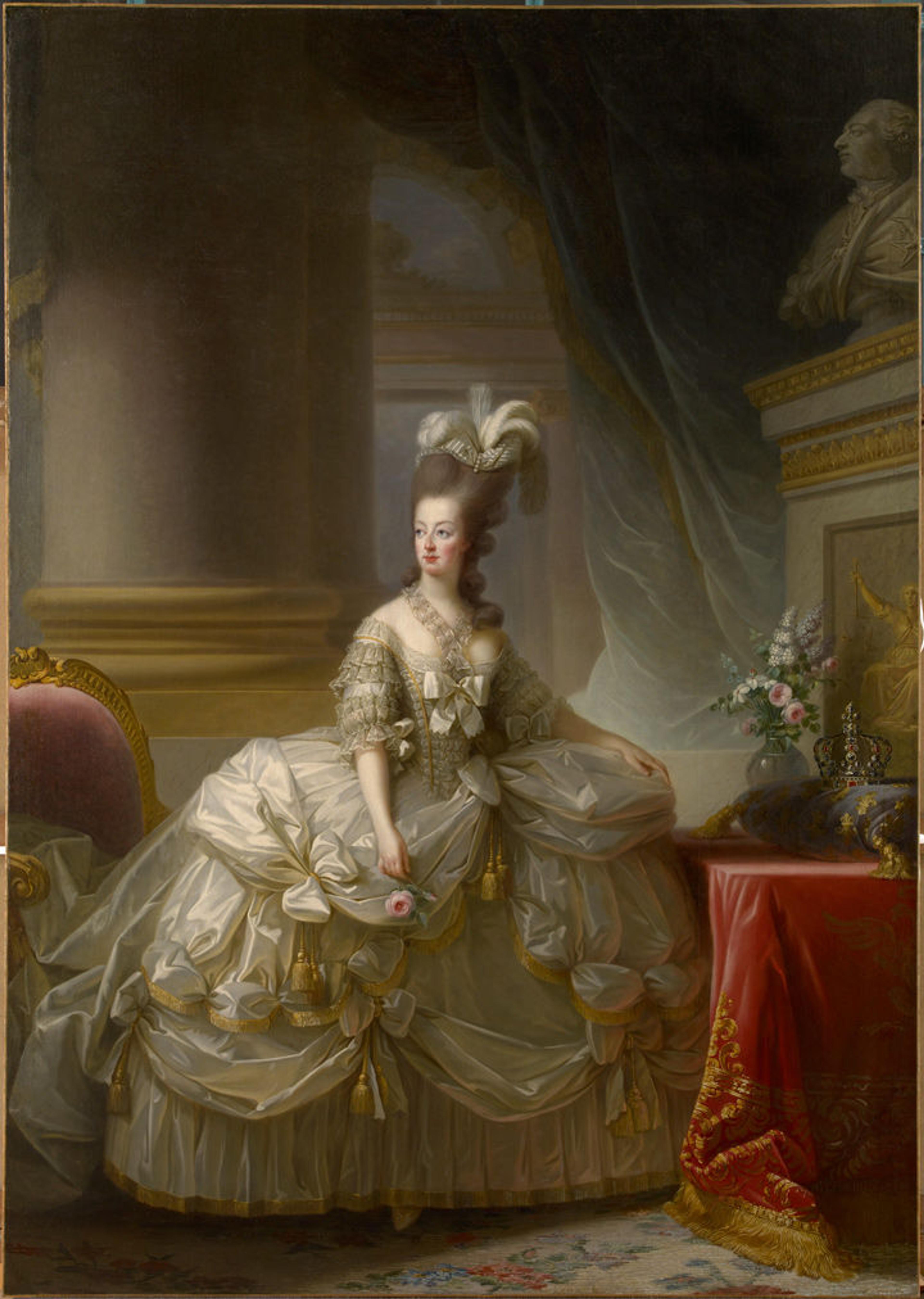
Élisabeth Louise Vigée Le Brun (French, 1755–1842). Marie Antoinette in Court Dress, 1778. Oil on canvas, 107 1/2 in. x 76 in. (273 x 193.5 cm). Kunsthistorisches Museum, Vienna, Gemäldegalerie (GG 2772)
«Élisabeth Louise Vigée Le Brun was a talented portraitist who rose above prejudices aimed at her for being a woman, wife, and mother. I encountered her story while I was interning in the Editorial Department as part of The Met's High School Internship Program. Reading through her experiences in the catalogue Vigée Le Brun, which accompanied the retrospective exhibition, I was drawn to the struggles she faced and how she continued to pursue her passion.»
As a young girl, Vigée Le Brun followed in her father's footsteps as a painter. As she grew older, she began gaining recognition for her portraits and, later, began painting Marie Antoinette and her court. Her talent enticed people, but instead of praising her for work, they spread rumors that claimed the artist Monsieur Ménageot finished her paintings for her.

The wealthy labeled Vigée Le Brun as a counter-revolutionary, which made her a target of slander. People said that in order for her to have succeeded she must have attracted wealthy men. She became depressed and soon after fled France with her daughter to escape the guillotine. Vigée Le Brun was in exile for 12 years, but she continued to find royalty to paint.
Left: Élisabeth Louise Vigée Le Brun (French, 1755–1842). The Maréchale-Comtesse de Mailly in Van Dyck Costumes, 1783. Oil on canvas, Oval, 29 x 23 1/4 in. (73.5 x 59 cm). Private collection
The exhibition Vigée Le Brun was only the second devoted to her art in modern times. After all these years, she is just beginning to receive the recognition and credit she deserves. European paintings are not my greatest interest, but I visited the exhibition to get in touch with her artwork and learn more about her. I found out that Vigée Le Brun challenged the norm with her indifference to the elegant clothing expected to be worn by the queen. She painted Marie Antoinette in a muslin dress, which was very controversial. I also learned that Vigée Le Brun faced many struggles. Her stepfather and husband, at different times in her life, took some of the money she made, and her second child died in infancy. Some art historians think this contributed to the way she took such care when painting children.
Centuries later, Vigée Le Brun's story echoes with women today because her life was filled with sacrifices and she had to prove herself worthy as a woman. Although the label of "feminism" was not used in the 18th century, to me Vigée Le Brun is a feminist, demonstrated by the challenges she overcame to become an independent woman and mother. She reminds me of my own plight and of how people have tried to discourage me from following my dreams. I identify as an American-Egyptian Muslim woman, and people have said that my identity will hinder my ability to be successful. Although my identity may create obstacles for me and my journey will not be as easy as others, I will persevere. I relate to this woman from another century because her passion pushed her to defeat the odds, and my mentality is the same.